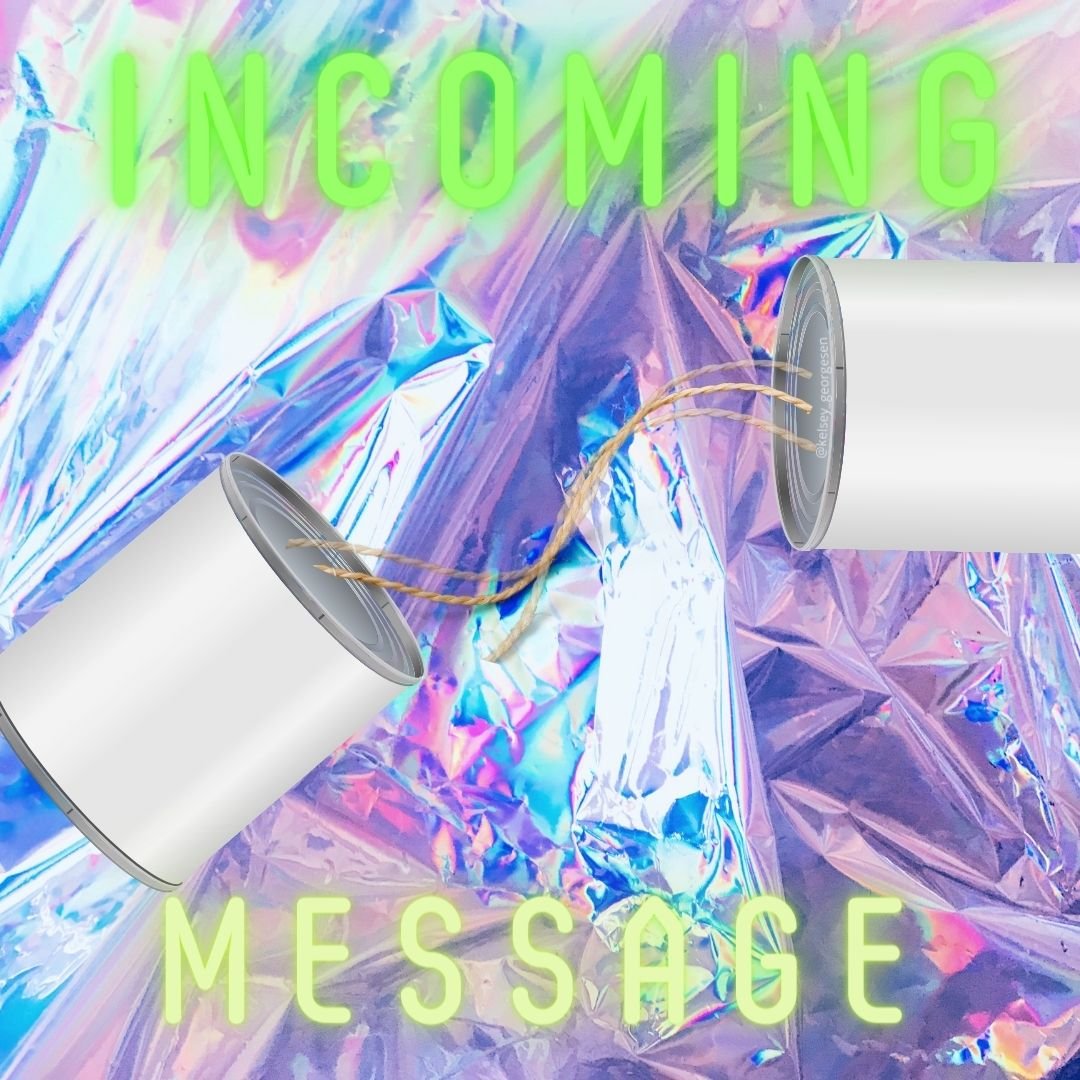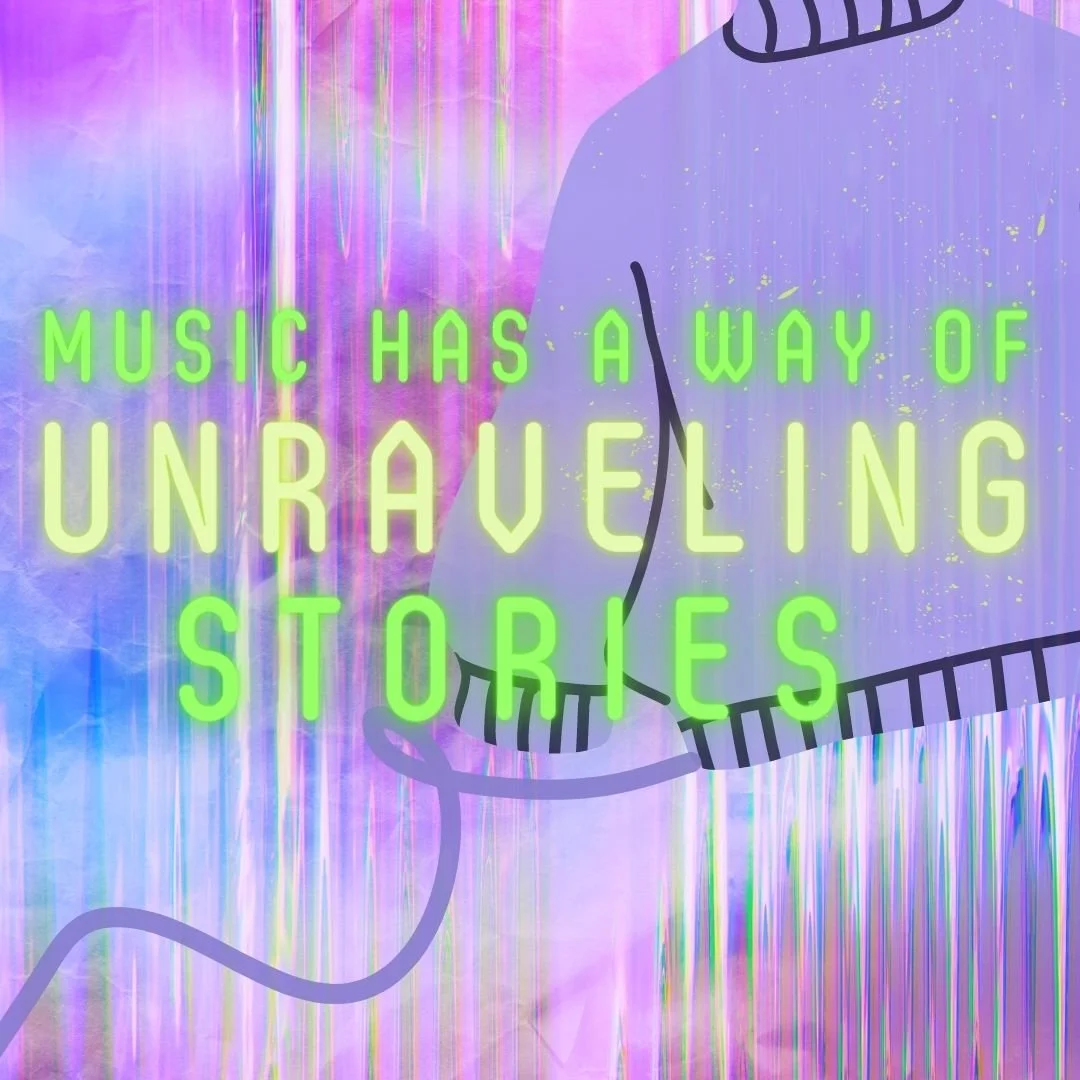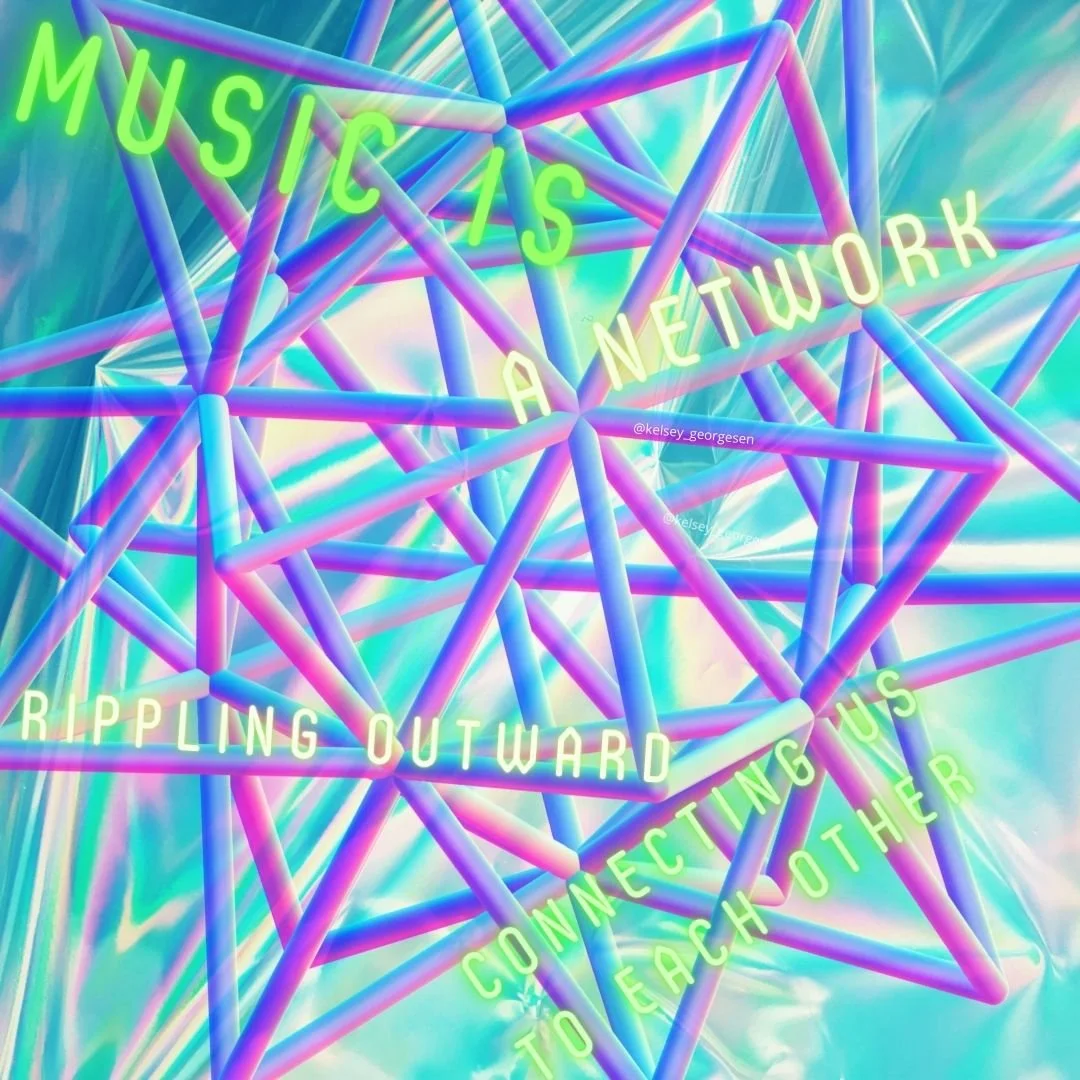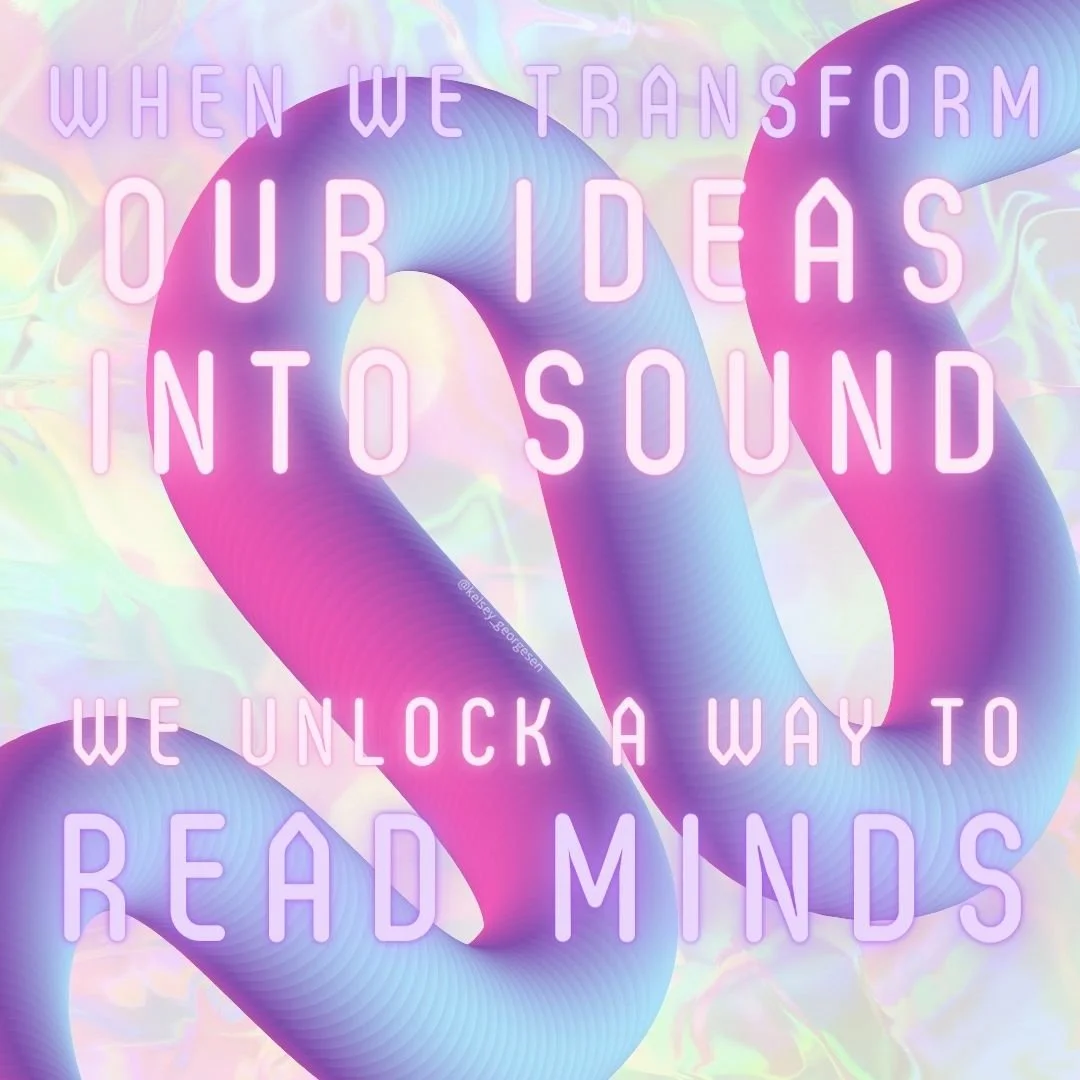Active Listening as a part of a Creative Practice
Music is a language and just as we practice reading and writing listening and speaking in music we also need to be practicing active and intentional listening and learning the language of the different styles that we are practicing.
I was attending a virtual gathering of artists recently, which I always find immensely refreshing, and I noticed an interesting pattern. Again and again, people were sharing that they have a personal goal or practice of creating more than they consume each day. I’ve been observing a lot of artists and creators talking about the bane of consumption culture, and I find it interesting and surprising. I find consumption to actually be an important part of an art practice for two reasons.
The first reason is that without consumption of art, there is no point in creating art. I’m using art in a vague way intentionally- art is all kinds of things. I have friends who work in all kinds of media, from being on tv to tik tok, from gallery exhibitions to intersection digital presentations, all of these things are forms of art. Without active consumers of those art forms, what point is there in creating them? What is the point of performing music if there is no audience to listen to it?
Beyond needing an audience or community to engage with these kinds of arts, it is also essential as an artist to be consuming a variety of work. Here’s why: it is so easy to make ourselves into a sort of echo-chamber. The beauty of the algorithm is also its crux- when we are engaging with content (read: online videos, posts on social media, etc.) without intention or action, we will be shown more of the same things again and again. It’s easy to feel assured in our views and feel like this is best, but it is important to step outside of our own experiences and view the world from other people’s perspectives. Beyond helping you to connect and engage with new viewpoints and other experiences, this will also infuse your own creative play with fresh new angles and ideas.
It is very easy to get frustrated with mindless habits of media consumption, but I would like to challenge you to find a way to be intentional with the way that you engage with work and what types of art and ideas you choose to consume.
Listening with Intention
In academic environments, “active listening” in music is often described as listening that is that is receiving your undivided attention, you are not doing anything else but listening intently. Often this involves following along with a musical score, reading the notes to do an analysis or visualizing playing the piece. These types of active listenings will help you to understand a piece in more depth, but I think that that kind of active listening, is ultimately unsustainable for the average person. To create a practice of active listening in your own day to day routine, it's essential to find moments where where it's easy to focus in on the sounds surrounding you.
It might sound silly, but if you have daily chore that you're doing regularly, such as washing dishes, picking up objects around the house, or maybe even a daily walk or running routine, those are great moments for for adding in daily listening practice. By integrating music intentional music listening into your regular experiences, you will build a joyful habit and you will learn to develop your listening skills and musical interests and styles. The key to maintaining a practice like that is preparation beforehand. If you want to be listening to a certain style or explore new artists you need to dedicate time beforehand to curating or exploring playlists or albums featuring those styles of music. Here are a few tips for curating active listening playlists.
Exploring an Artist in Depth
The classic way to plan your listening is what I'll describe as the LP method, which would be to play through a classic album from the beginning to the end. Listening to an album from the first track to the last track gives you the experience that the artists intended for you to have. Many albums will tell and overarching narrative, or will have a mood that develops from the beginning to the end of the album experience. This allows you to hear the music in the context that the artist intended.
This method also lets you listen to songs on the track that you might not already be familiar with. For example, a lot of us will know the most popular track, or the first or last track in an album, but there are a lot of other songs that support these ideas and further develop the topic or theme of the album. For the same reason, you end up hearing new styles of music by that artist, or unique approaches to their music that you might not have heard because it's not their most popular work.
Listening all the way through an album can expose you to new layers of an artist, and will help you to deepen your knowing and understanding of that musician. Listening to just one artist will give you a limited perspective of that style or genre. Just because there's a lot of genius in one particular artist's music, that doesn't mean that artists created that music and isolation. Music is never created in a vacuum- it is a social product, and is always at the mercy of outside influence and social events. If you know you love one artist, a great way to explore more music by that artist is to find out who those artists influences and collaborators were. Who else were they recording with and songwriting with? Who did they listen to as a child that inspired their music?
It is also worth considering not only who their collaborators and influences were, but what social events were (or are) happening as this music is created. What political leaders are in power? What is the social environment that they are experiencing? Does their identity give them an experience different from your own? This is a practice in informed listening, and can be a practice in anti-racism as you look closely at artists who were inspired by musicians of color who may not have been given the same platform.
Curating a Playlist Based on Seasons & Cycles
I have two favorite approaches when it comes to curating playlists. While I do have playlists that are thematic, such as a playlist featuring all all women jazz pianists, I find those difficult to integrate into my day to day listening routine. So to make music easy to listen to throughout the day, I create overarching playlists for that time of year or for a specific activity that I'm doing.
My first journey into curating regular playlist for myself was making my mixed tapes cause that's cassette tapes to put in my car in my first car when I was learning how to drive. Then when I started running, I created playlist that had upbeat songs all around the same tempo I was hoping to run at, and I would listen to these upbeat songs as I ran. I actually got sick of these songs pretty fast and found it difficult to know when to update the songs or when to move to a different playlist.
A method that I've been using for years since then is to create playlist based on the season. So for several years each new season I will make a fall 2021 or Winter 2021 playlist for that season. I'm not making these songs thematic like oh this sounds wintry or this is my holiday song, although you could do that, but what I choose to do is to include the artist that I'm really drawn to listening to during that time, or the style of music I'm trying to do a personal study in. These playlists are more like my mood for that period of time. The summer of 2019 playlist for me is full of music by Queen, and the seasons following all had one or two of my favorite songs by Queen make it into those playlists.
I find the each Winter I end up putting a little more Leona Lahavas into my playlist. Spring of 2020 was heavy on Dolly Parton and there has been a Dolly Parton track in each playlist sense. Sometimes these playlists are a deep dive in trying to understand what a certain artist or style of music is achieving, and how they're doing that, but often it's about how it makes me feel what I'm interested in emulating in my own playing. Not just emulating though, these playlists are a compilation of what I'm interested in internalizing and thinking about everyday, because of course all I think about all day is music. Because I'm always listening to or playing music I try to be very intentional about what music I'm consuming. I do branch outside of my comfort zone and spend some time listening to what other people are listening to, I love when people in my life share the music they're into with me because often our listening tastes are so different.
These playlists don’t have to follow conventional seasons, either. I love the idea of making a playlist based on the astrological season, the lunar cycle, your holiday practice, or a that follow a non-Western calendar system. I make a playlist each spring, summer, fall, and winter, and sometimes I still miss a season. For now, that’s as frequent as I’m able to check in with my listening behaviors and curate my listening for that season. This activity is spiralic for me, meaning that each year I build on my taste from that season a year ago, my current interests this year, and a seeking of things that are new to me.
Archiving a Mood
The other beautiful thing about creating seasonal playlists like this is that you have an active time capsule. The music I was listening to 5 years ago, or 10 years ago, are so different than the music I'm listening to right now. These playlists mark where I'm at and my own listening journey, my own emotional experience in that year, and the artists that are popular now come out or the artists that are speaking to me now. When I listen back to a playlist like Summer 2019 or Winter 2017 I am instantly transported to my experience and feelings and memories from that point in time. It’s pretty powerful stuff.
Creating seasonal playlist is a way to make an archive for yourself- and also these playlists are a great way to dive deep into a new style of music. I like making my playlist based on time passing, rather than task doing, because if you make a playlist of “music to listen to while I'm cleaning,” you might not update that playlist regularly or consistently, eventually will get tired of it, and you won't be exploring new styles of music. I like designing my playlists based on seasons because it's an interval of time that I can check in with myself and revisit different styles of music-and sometimes I forget to make a new playlist and end up listening to an old one.
That passage of time might be different for you. It might be once a year, it might be every month. But if you're trying to listen to a new style, lean in to the artists and the songs that you're gravitating towards in this moment, and then explore their roots and what's come from them. If you love a certain artist you can find out who they collaborated with, who inspired them, and then who did they inspire? What current new young artists are out there making music that listened to this artist before? Music is a lineage, it's a heritage, it's a story and it's generational. It's also a connecting thread, and it's so fun to explore how one artist or one style is connected to another artist or another style.
Music as Time Travel
With that archive, it’s easy to travel back in time, to remember where you once were and how you felt. But I’m wondering- what does the next version of myself listen to? If 2022 is full of travel and adventures, what kind of music reflects that? What will I listen to on my long winter walks this year, what songs will be playing while I run around and clean up to get ready for a trip or a party? If you want to get to know your future self, put together a playlist for you. If you’re having a party next month, build your playlist now, and listen to it while you plan for the big day! If you’re meeting a milestone in life- building a house or moving across the country, make a playlist to commemorate that, and to move yourself from now to then. The bonus of making a playlist for the future is that you also end up making time capsule for when this moment is behind you. Want to remember that birthday with clarity? You can dig up that playlist, and you will be transported back to this moment in time.
How to Weave Active Listening Into Your Life
This is something that often comes up during private piano lessons for adults. People will ask about developing a personal listening practice, or will express that they want to learn a new style of piano playing like blues piano styles or jazz piano basics, but they don’t know where to start in listening to this style. If you are taking private piano lessons for adults, this is something that you can definitely work on with your teacher. Especially in longer lessons, you can designate a portion of lesson time to new listening, or you can schedule a personal piano lesson with your teacher with the explicit purpose of designing a new playlist together. You can book a remote piano lesson here if you’d like to work on this with me as your zoom piano teacher!
If you aren’t able to commit to private piano lessons right now, you might find that online group piano lessons can help guide your listening. In the right class, you will find that you are being exposed to new styles of music and new artists you hadn’t heard before. Use this is a starting place to explore new kinds of music. I know that in my blues piano class, we listened to a variety of different styles throughout, and some of the resources that came with the class broke down more details about artists and styles. You can explore some of those here if you are looking at learning more about playing blues piano and blues music in general. I’m looking forward to including more unique types of music and distinct styles of piano playing in the upcoming Keyboard Collective. The new learning platform that we are using, Podia, should make it very easy to use our class content as a starting point and further explore new music beyond that. If you’re looking for a space to connect with other music lovers and to expand your knowledge and skills, this series of online group piano lessons for adults is probably for you!
On Consuming Media, Music, and Art
Some closing thoughts on the cycle of consumption and creation.
Video Transcription:
Something I think that often gets overlooked in an art practice is the habit of consumption
I attended a gathering of artists recently, and it was so interesting to me that several people chimed in and said that they have a personal rule or goal that they will always create more than they consume- each day they create more than they consume.
And I think that’s really admirable and aspirational, but I also think that it’s pretty unrealistic in our consumption based culture. Not only is it unrealistic, I think that it help perpetuate these self-contained bubbles, these isolationist bubbles that we live in. I think it’s really important to be stepping outside of your own experience, and connecting with other people in different ways.
Part of that is having a look at what we consume, and making sure we’re diversifying what we’re listening to, what we’re watching, what we’re reading, what we’re taking in. So, if you feel like you’re in overconsumption culture, rather than just not consuming, reevaluate what you’re looking at, what you’re connecting with, and what you want to be taking in. I think that’s so much more imporant than just eliminating it altogether. Change things up! Reach out to your community. Find out what they’re consuming right now.
I recently made a post where I asked people what they’re listening to, and I made a whole playlist based on other people’s music and it was so amazing. I took the things that people were listening to and then I filled it out to connect all of those threads with my own music and the things that inspire me. So, I wanted to share that practice with all of you and give you just kind of this extra inspiration to infuse your consumption with intention and diversifying what you’re consuming and listening to.
One strategy that I use to make sure that material I’m consuming and creating doesn’t become stagnant is that I form collections for each season. Now, seasons can mean all sorts of things. For me, I’m basing them on spring, summer, fall, and winter. And sometimes I miss a few. Um, for you these might be monthly seasons. They might be lunar cycles or sun signs. They might be non-western calendar or holidays that you celebrate. Season can mean whatever you want it to mean.
But I create playlists based on each season, so that I’m listening to different music. Now I heard someone talk a while ago about how the same time every year they find themselves wearing denim head to toe, like every summer or every fall they’re like- “Oh, I’m in the Canadian tuxedo again..” And I thought that was really funny because we all probably have something like that. Maybe it’s like, oh yeah, once I break this pair of boots out for the year, I wear them for the next 6 months, every time. Maybe for you, you find yourself listening to country music all winter, or electronica all summer. Maybe you find yourself reading the same childhood author, the same favorite author from your childhood each spring, just dipping into that nostalgia, and feeling that feeling again.
Um, so, I like to find what am I experiencing in that season that I keep coming back to again and again, but also what’s new for me? What am I experiencing in that season in my life? And how can I reflect that in what I am consuming and what I’m listening to and engaging with? The other really cool thing about this practice of a regular seasonal collection of whatever are you are consuming, or whatever media you are consuming, is that it creates this really personal historical archive where you can go back and say, “How was I feeling in the winter of 2019?” and I can listen to that and experience those moods, emotions, and memories that I associate with that music. And a lot of times I’ll take a few songs from a playlist years back and add them into my playlist this year to kind of tie together this cohesive experience for that season and how it reflects in me, because everything is cyclical and spiralic. We come back to these experiences again and again.






